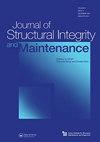不同局部深度混凝土桥面修复技术的大气污染物排放对比研究
IF 3.1
Q2 ENGINEERING, CIVIL
Journal of Structural Integrity and Maintenance
Pub Date : 2023-04-03
DOI:10.1080/24705314.2023.2167575
引用次数: 1
摘要
摘要桥梁是公路网的主要组成部分之一,对空气排放有着强烈的影响。因此,环境评估对于桥梁生命周期阶段至关重要,包括设计、施工、使用和维护,最后是寿命结束。现有的大多数研究都集中在材料和施工阶段,而很少关注使用和维护阶段;尽管桥梁修复活动的速度迅速增加。本文着重于桥梁养护阶段,并进行了环境比较案例研究。本文的目的是从环境的角度比较不同的局部深度混凝土去除技术,特别是环境对空气质量的影响。本文比较了四种常用技术的污染物排放情况:削片、锯切、铣削和喷水。使用了两个环境数据模型,GREET和MOVES,并考虑了五种空气污染物,即CO2、CO、NOx、SO2和PM10。结果表明,切削产生的污染物排放量最小,而铣削产生的空气排放量最高。此外,去除方法的利用时间与该方法释放的排放量之间存在比例关系。本文章由计算机程序翻译,如有差异,请以英文原文为准。
Air emission pollutants of different partial depth concrete bridge deck repair techniques: a comparative study
ABSTRACT Bridges are one of the main components of highway networks with intensive impacts in terms of air emissions. Therefore, an environmental assessment is essential for the bridge life cycle phases including design, construction, usage and maintenance, and lastly end of life. Most of the existing studies have focused on the material and construction phase while less attention has been given to the use and maintenance phase; notwithstanding the rapid increasing rate of bridge rehabilitation activities. This paper focuses on the bridge maintenance phase and represents a comparative environmental case study. The purpose of this paper is to compare different partial-depth concrete removal techniques from an environmental perspective, particularly the environmental effects on air quality. The paper compares the pollutant emissions of four common techniques: chipping, sawing and chipping, milling, and water-blasting. Two environmental data models are used, GREET and MOVES, and five air pollutants are considered which are CO2, CO, NOx, SO2, and PM10. The results indicate that chipping produces the least amount of pollutant emissions while milling emits the highest amount of air emissions. Additionally, there is a proportional relationship between the utilization time of the removal method and the amount of the released emissions of the method.
求助全文
通过发布文献求助,成功后即可免费获取论文全文。
去求助
来源期刊

Journal of Structural Integrity and Maintenance
ENGINEERING, CIVIL-
CiteScore
3.90
自引率
9.50%
发文量
24
 求助内容:
求助内容: 应助结果提醒方式:
应助结果提醒方式:


